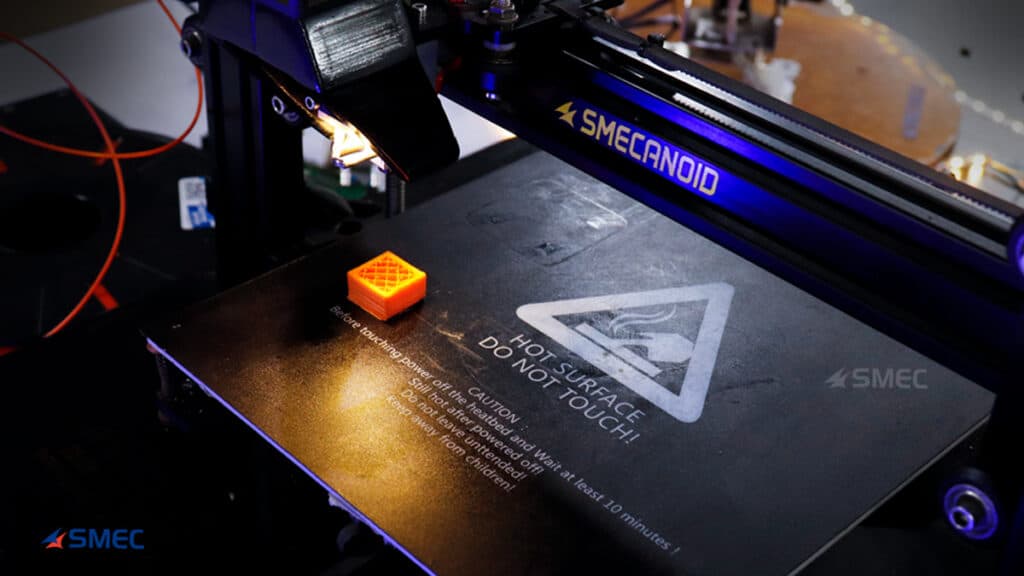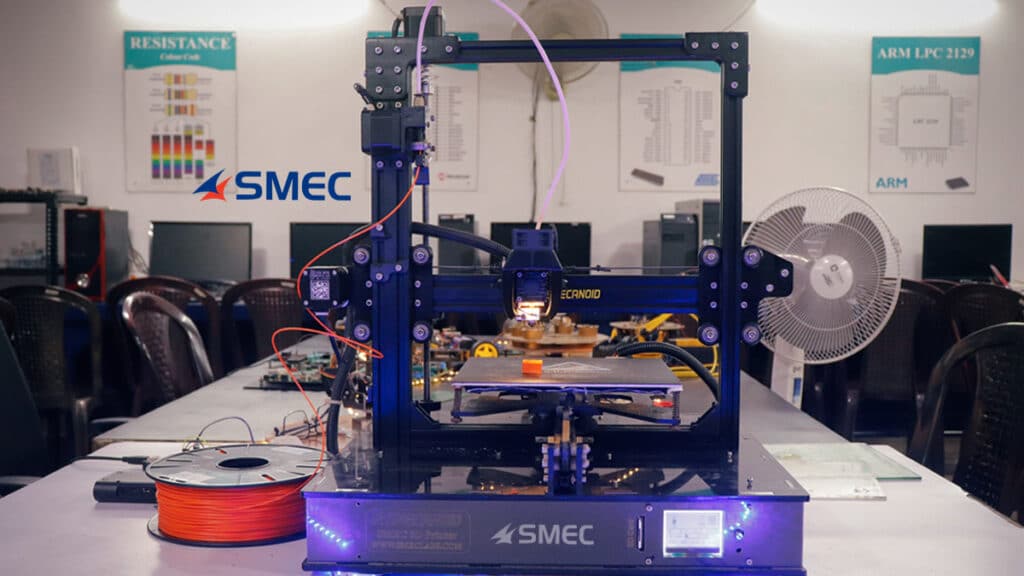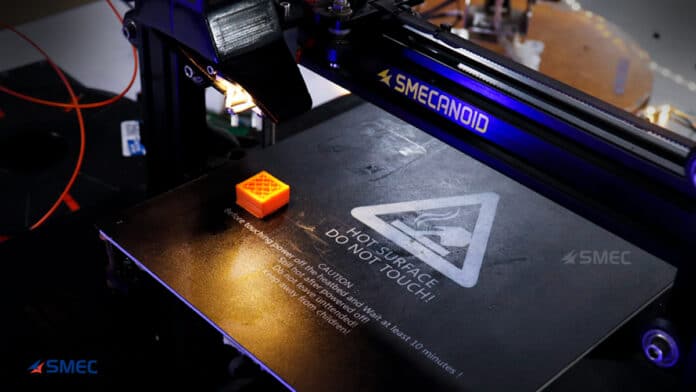Introduction to 3D printing
3D printing is the process of creating a physical object by using a 3D digital model. A digital object will be transformed into a physical object by 3D printing. The physical objects will be created by adding layer by layer of the material. We can consider 3D printing as a combination of Digital Technology and Additive manufacturing. For the past several years 3d printing has gained a lot of attention in the manufacturing sector. So by 3D printing, we can develop a physical object from a digital design.

How does a 3D printing work and what are all the materials used in 3D printing?
3D printing is also called additive manufacturing because it will create a physical object by adding layers of material. This 3D model will be developed by using several materials such as plastic, metal, or sometimes biological material to create the required objects. The major advantage of 3D printing over the conventional manufacturing method is that 3D printing can do complex designs in less time.
In this type of printing a virtual design of the object will be created. This virtual design will be created by using some computer-aided design. After completing the virtual model it should be prepared for printing. The first process of this will be dividing the model into several layers and this is called slicing. Slicing will be done to the virtual model and then the virtual model will be sliced into several hundred pieces with the help of special software.
Then the sliced virtual image will be uploaded to the 3D printer and this printer will print it layer by layer. In a 3D printer, the objects are printed by adding several layers, this process is called extrusion. So based on the material which is used for the 3D printing extrusion will be different. The type of extrusion will be different for different materials.
What is the purpose of the 3D printer and what are the types of 3D printers?
The purpose of the 3D printer is to create a physical object really fast according to the digital image. The conventional method will take a lot of time to manufacture a complex product. We can use the 3D printer to easily create complex 3D objects. 3D printing can create intricate designs and this is not possible by the conventional method. Design flexibility is another feature of the 3D printer but it’s not the same for conventional manufacturing. In the jewellery sector 3D printer plays a major role and it is because complex designs can be created with the help of the 3D printer.
Types of 3D printers
Based on the materials
- Metallic type
- Plastic-type
Based on the techniques used
- Powder bed and inkjet head 3D printers
- Selective laser melting
- Selective laser sintering
- Fused Filament Fabrication (FFF)
- Stereolithography
- Electron beam melting
- Laminated object manufacturing
- Continuous liquid interface production
Why 3D printer is called rapid prototyping and which is the best material for 3D printing?
We can easily develop several prototypes by using 3D printers and because of this, it is called rapid prototyping or quick prototyping. The strongest material for 3D printing is polycarbonate.
Is it possible to do mass production by using a 3D printer?
Mass production is the major concern of 3D printing. This is where the conventional method comes in handy.
What can we make by using 3D printers?
- Consumer products
- Aerospace components
- Automotive components
- Industrial products
- Dental products
What are the significant features and specifications of the SMEC 3D printer?
SMEC 3D printer uses a technique called Fused Filament Fabrication (FFF). In this method, the filament and the bed are heated to a certain temperature and at the end, the filament gets melted. It forms a product wherever the fused filament gets deposited. The supporting file format of the 3D printing software is a .stl file. There are different types of 3D printers and the software used for it will be different. The FlashPrint software is used for Flashforge 3D printers, Creality software for Creality ender 3D printers, etc. There is also open access for slicing the product.

SMEC 3D printer specification and its operational features
Bed dimensions: Length = 200(X-axis), Width = 150mm(Y-Axis), Height (Z-axis)
Type of filament used: PLA
Overall dimensions: Length = (X-axis), Width = (Y-Axis)
Infill wall thickness – 20%
Filament diameter – 1.8mm
Print speed (Min) – 60mm per second
Extruder Quantity – 1 No.
Ambient operating temperature: 15 to 30oC
Operational extruder temperature: 180oC
Operational print bed temperature: 80oC
We use PLA as a filament material and it must be heated up to a temperature of 180oC and the bed temperature must be 60 to 80oC.
Will 3D printing replace the conventional method?
There are several advantages of 3D printing like integrating several parts in a component. Flexibility and compatibility are other features. Complex designs can be easily completed with the help of 3D printing. Product development can be easily done but mass production can’t be achieved by 3D printing.
What are the applications of 3D printing?
Healthcare
3D printing has revolutionized healthcare by enabling the production of patient-specific medical devices, prosthetics, and even human tissue. Customized implants, surgical guides, and anatomical models have improved surgical precision and patient outcomes.
Aerospace and Automotive
The aerospace and automotive industries have embraced 3D printing to create lightweight components with complex structures. It has led to reduced costs, improved fuel efficiency, and faster prototyping, allowing for rapid innovation.
Architecture and Construction
Architects and engineers are leveraging 3D printing to create intricate scale models, architectural elements, and even entire buildings. This technology offers new possibilities for sustainable construction, customization, and rapid on-site fabrication.
Education and Research
3D printers are transforming education and research by providing hands-on learning experiences and enabling the creation of intricate models and prototypes. Students can bring their ideas to life, fostering innovation and creativity.
What are the advantages of 3D printers?
Low initial cost
The initial cost of the 3D printer is very low, in the case of the industrial manufacturing plant the initial cost will be really high.
Rapid Prototyping
3D printing allows for quick and cost-effective production of prototypes, facilitating faster iterations and reducing time to market.
Design Freedom
The technology enables the realization of complex and intricate designs that would be challenging or impossible with traditional manufacturing methods.
Customization
3D printing empowers customization by allowing individualized production and personalization of products.
Waste Reduction
Additive manufacturing is an inherently sustainable process as it generates less waste than subtractive methods.
Author – Ashlin A J

